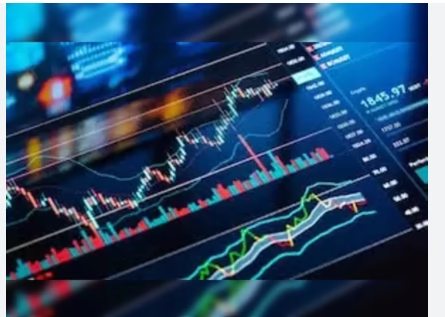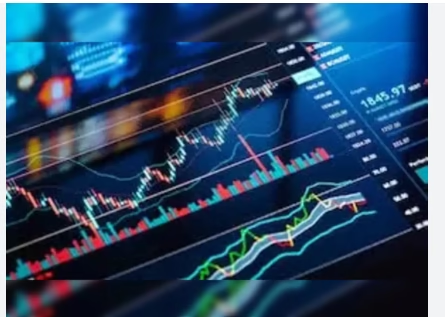The Indian stock market faced a historic meltdown on April 7, 2025, as benchmark indices plummeted within seconds of opening. This catastrophic event erased a staggering Rs 20 lakh crore in market capitalization, leaving investors reeling and the economy on edge. The crash was triggered by US President Donald Trump’s sweeping tariffs, which sent shockwaves across global markets. Here’s an in-depth analysis of what happened, why it happened, and its implications.
What Led to the Market Crash?
The steep decline in Indian markets was primarily driven by fears of a global recession fueled by escalating trade tensions. President Trump announced reciprocal tariffs on several countries, including India, with Indian exports to the US facing a hefty 26% tariff. This move heightened uncertainty for businesses and investors alike.
Key Factors Behind the Crash:
- Trump’s Tariff Announcement:
- The tariffs targeted multiple nations, with rates as high as 50% for some countries.
- India was hit with a 26% tariff on all exports to the US, severely impacting sectors like IT, pharmaceuticals, and textiles.
- Global Recession Fears:
- The trade war raised concerns about a prolonged global economic slowdown.
- Major economies like China retaliated with counter-tariffs, further intensifying the crisis.
- Volatility Surge:
- India’s Volatility Index (VIX) soared by over 50%, reflecting heightened investor anxiety.
- This led to panic selling across sectors.
- Sectoral Impact:
- Banking, IT, and auto sectors bore the brunt of the sell-off.
- Heavyweights like Tata Steel, Infosys, and HDFC Bank saw sharp declines.
Market Performance on Black Monday
The Sensex nosedived nearly 4,000 points to close at 71,425.01, marking its worst single-day fall since June 2024. Similarly, the Nifty 50 fell over 1,000 points to settle below the critical 21,750 mark.
Key Statistics:
- Sensex fell by 3,939.68 points (5.22%).
- Nifty dropped by 1,160.80 points (5%).
- Market capitalization of BSE-listed companies eroded by Rs 20 lakh crore within minutes.
Global Ripple Effects
The crash wasn’t confined to Indian markets; it was part of a global rout that saw major indices across Asia and the US plunge.
- Asian Markets:
- Japan’s Nikkei 225 fell to an 18-month low.
- Hong Kong’s Hang Seng index recorded its sharpest one-day drop in over a decade.
- US Markets:
- The S&P 500 experienced its worst two-day fall since March 2020.
- Nasdaq entered bear market territory as tech stocks crumbled under recession fears.
- Oil Prices:
- Brent crude fell to $63 per barrel, a four-year low.
- West Texas Intermediate (WTI) dropped to $60 per barrel amid demand concerns.
Sectoral Analysis: Who Lost the Most?

The crash hit every sector hard, but some were more affected than others:
- Banking Sector:
- Nifty Bank index fell over 3%.
- Major losers included Kotak Mahindra Bank (-4%), ICICI Bank (-3%), and HDFC Bank (-3%).
- IT Sector:
- Export-heavy IT firms like Infosys and TCS saw significant declines due to tariff fears.
- The sector’s reliance on US markets made it particularly vulnerable.
- Auto Sector:
- Auto stocks plunged as global demand concerns mounted.
- Tata Motors led the decline with a drop of over 7%.
- Metals and Energy:
- Tata Steel fell over 8%, while Reliance Industries also faced steep losses.
Investor Sentiment: Panic and Uncertainty
The abrupt crash left investors in shock and raised questions about market stability:
- Retail investors suffered heavy losses as mutual funds and small-cap stocks tanked.
- Foreign Institutional Investors (FIIs) pulled out billions from Indian equities amid heightened risk aversion.
- Analysts advised caution and a “wait-and-watch” approach given the unpredictable nature of trade tensions.
Economic Implications for India
- Export Challenges:
- Higher tariffs make Indian goods less competitive in the US market.
- Key industries like IT services and textiles face revenue pressures.
- Currency Depreciation:
- The rupee weakened against the dollar due to capital outflows.
- A weaker currency could exacerbate inflationary pressures.
- Policy Responses Needed:
- Experts called for government intervention to stabilize markets.
- Measures like interest rate cuts or fiscal stimulus could help restore confidence.
Global Trade War: A Broader Perspective
President Trump’s tariff policy has been widely criticized for its potential to destabilize the global economy:
- Critics argue that such protectionist measures amount to economic blackmail.
- While intended to boost domestic industries in the US, they risk alienating key trading partners and disrupting supply chains.
China’s retaliation further escalates tensions:
- A 34% counter-tariff on US goods was announced.
- Export controls on critical materials could hurt American industries.
Lessons from Past Crashes
This isn’t the first time Indian markets have faced such turmoil. Historical crashes offer valuable lessons:
- COVID-19 Crash (March 2020):
- The Sensex fell over 8% in a single day amid pandemic fears.
- Recovery required coordinated fiscal and monetary policy responses.
- Demonetization Impact (November 2016):
- Markets reacted negatively to sudden policy changes but stabilized over time.
- 2008 Financial Crisis:
- The global meltdown highlighted the interconnectedness of financial markets.
What Lies Ahead?
The road to recovery will depend on several factors:
- Resolution of Trade Tensions:
- A diplomatic solution between the US and its trading partners is crucial.
- Prolonged uncertainty could deepen recession fears globally.
- Domestic Policy Measures:
- The Indian government may need to introduce stimulus packages or tax reliefs.
- Encouraging domestic consumption can offset export challenges.
- Investor Strategy:
- Experts recommend focusing on fundamentally strong stocks for long-term gains.
- Diversification across asset classes can help mitigate risks.
Conclusion
April 7, 2025, will go down in history as one of the darkest days for Indian stock markets. The Rs 20 lakh crore wealth erosion underscores the vulnerability of financial systems to geopolitical shocks like trade wars. While recovery is possible with appropriate measures, this crash serves as a stark reminder of the need for vigilance in an increasingly interconnected world economy.
Investors must brace themselves for continued volatility while policymakers work towards stabilizing markets and restoring confidence amidst these turbulent times.











